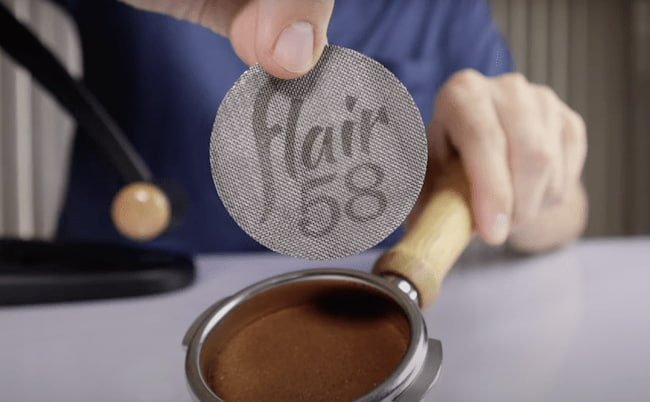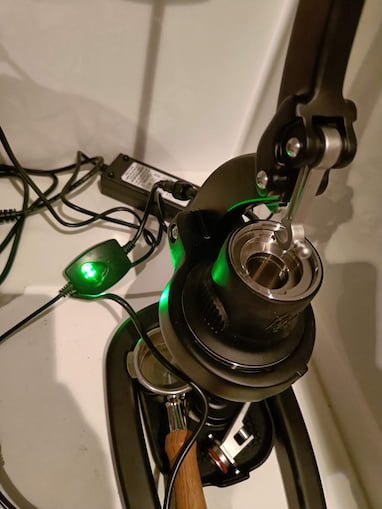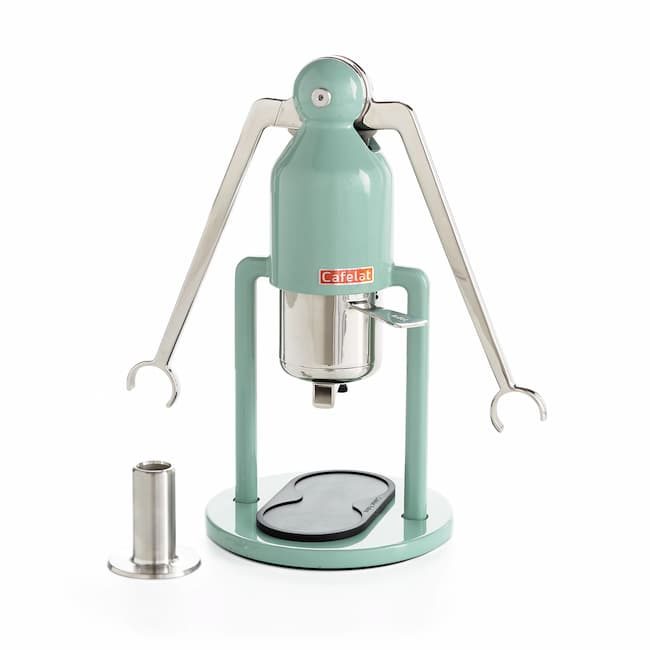By now, Flair is almost synonymous with the new era of non-electric manual espresso makers.
The Flair 58 is the company’s attempt to create a total hegemony in the realm of manual espresso.
Do they succeed in that attempt? And are they able to dethrone one of my previous favorites, the Cafelat Robot, this time around? 🤔
Those are some of the questions we will look at in this review of the Flair 58 espresso maker.
➡️ Check price at Coffee Bros
➡️ Check the current price at Prima Coffee
➡️ Check price at Flair Official Site
About Flair Espresso
The Flair Espresso story started like many other coffee projects nowadays – as a Kickstarter project in 2016. A Brazilian mechanical engineer named Sergio Landau was the inventor. After retiring, he experimented with a simple design that would eventually become the Flair Classic.
Since then, Flair has become a legit company with a big following of Flair-devotees, sharing insights and brewing hacks in the Facebook group “Brew with Flair.”
I have been interested in manual espresso makers for quite some years now, so obviously, I got very curious when Flair approached me to hear if I wanted to test their newest flagship product. However, I should note that Flair has had no influence on this review and that they haven’t seen it before publication.
Check out the review in video format here 👇
Flair has produced several different models since the original was released.
- The first one is the Classic.
- Then came the Signature, which incorporates a pressure gauge.
- The Pro and Pro 2.0 offered both pressure gauge, wider baskets, and brew heads with more thermal mass.
- The Flair Neo was a step back to a rudimentary design similar to the Classic, but it came with a pressurized basket aimed at beginners.
The Flair 58 is a big step in a new direction. While all the other models were minor incremental improvements on the Classic, the Flair 58 is a complete redesign from the ground up.
It comes with the following:
- An entirely new lever design
- A proper 58 mm espresso portafilter and basket
- And an electric heating system
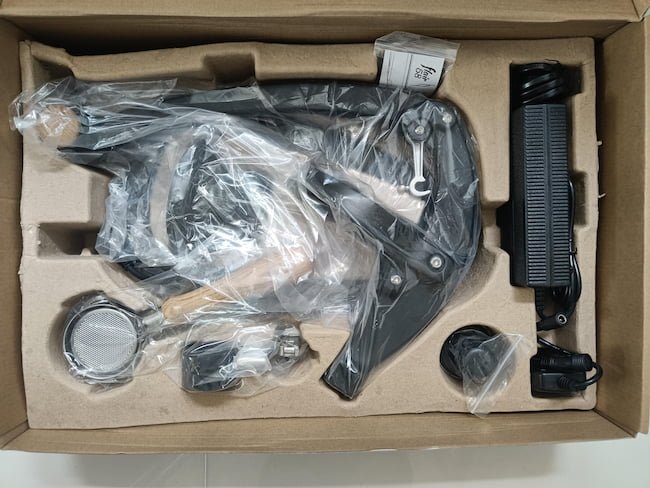
Initial Impressions of the Flair 58
The Flair 58 is striking when you pull it out of the box and assemble it. It’s bigger and more beautiful than all its predecessors.
I like the matte black color and wood accents they have gone with. It just feels and looks like a premium product.
Some people say it’s less refined than previous Flair products from an aesthetic point of view, but I disagree.
With its functional lines and a blend of wood and industrial-looking matte black, the design language is reminiscent of products such as the Fellow Ode and Timemore Black Mirror.
The longer lever with the T-handle is straightforward to pull and put pressure on compared to Flair Pro and Flair Classic. The additional length adds a ton of leverage.
The Flair also comes with a range of accessories, and they are all well-made. For example, the bottomless portafilter looks clean and classy with its wooden handle.
There is a small yet excellent tamper with a pretty unusual design. Instead of the traditional tennis racket grip, it’s meant to be used with ‘finger” pressure.
Overall, I’m pretty pleased with the design and material.
Valve plunger version?
There’s also a puck screen included in the package. This gadget is becoming quite popular among espresso lovers since it makes cleaning a lot easier and seems to promote a more even extraction. I think Flair was the first brand to introduce it, so kudos to them. Now many people also use it for regular espresso machines.
On the first version of the Flair 58 (let’s call it version 1.0) was optional whether you wanted to use the puck screen. However, with the new 1.1 design (the “valve plunger” version), you must use the puck screen because nothing prevents the water from accessing the puck.
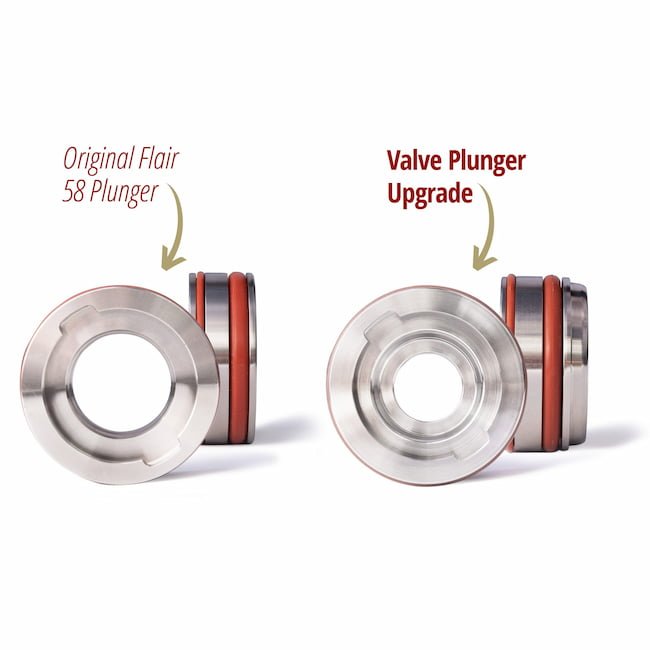
The new design comes with some advantages to the workflow. For example, you can leave it in while refilling instead of removing the plunger every time you fill the reservoir.
This might sound like a small thing on paper, but it’s a massive real-life improvement. It makes it feel like the Flair 58 is a real espresso machine with a “professional” workflow rather than a fiddly toy with many moving parts.
Electric Preheating
One of the most common complaints about the Flair Pro 2 was that preheating was a bit of a pain. Since the thermal mass of the brew head-on Flair Pro 2 was so big, a lot of heat was required to get it up to temperature.
With the Flair 58, this problem has been solved since electric preheating is built-in into the brew head.
It works very well in real life. Just plug it in and wait 4-5 minutes.
Essentially, it’s almost like there’s no waiting time since you must also wait for a kettle to boil the water, and you need to dose and prepare your puck.
It’s a lot faster than all espresso makers with a boiler, so that’s something I can appreciate.
There are three settings for the heating, but I usually go for the hottest setting and adjust the temperature on the kettle instead.
The electric preheating works great. My shots never have that harshness you could get with Flair Pro if you hadn’t warmed the brew head sufficiently.
However, the preheating, unfortunately, creates a new problem. It has a giant power supply that can be difficult to stow away. Of course, this also depends on your kitchen situation. You can hide it behind the table if you have a dedicated coffee station. But on a kitchen counter where your wife might have a say about the use of every little square inch, I anticipate domestic disturbance.
Some reviewers have also argued that the preheating controller’s green lights and three indicators were a big problem, but I don’t think it looks that bad.
It is possible to get a model called Flair 58 X that doesn’t have electric preheating, but honestly, I imagine it’s a bit of a pain to use. It’s a big brew head that will require a lot of thermal energy to heat. Plus, the design doesn’t seem built for constant removal, heating, and re-assembly. It’s just a bit too much.
WORKFLOW
Overall, the workflow is pretty good when you get used to it.
Like with all manual espresso makers, it’s a bit weird at first, but muscle memory kicks in once you get used to it, and it’s a breeze.
The main point that might annoy some people new to manual espresso is that you must use the puck screen. Also, after brewing, you must somehow manage the leftover water in the brew chamber since it will slowly drip out if you release the lever. So you need to move in with an additional cup for dumping water.

If you come from a regular pump machine, you can just let the device and portafilter be and enjoy your shot immediately. You don’t have to fear splashes on your espresso scale.
In the end, the workflow is quite good for a manual espresso maker and certainly better than the other products from Flair, where you had to disassemble many parts every time you wanted a shot. With the Flair 58 and its commercial-sized portafilter it just feels a lot more appealing to pull back-to-back shots. Just knock out the dry puck into the knock box, wipe the portafilter clean, use your favorite distribution method, and lock the portafilter in. Then you’re good to go.
I can even see the Flair 58 play a role in professional set-ups. Maybe on a coffee cart or as an additional device for profiled shots of guest beans in a specialty coffee shop.
The flavor of the shots?
Of course, we also have to talk about the flavor of the shots. The Flair 58 can produce some excellent espresso. There’s a lot of clarity! Almost too much at times. Compared to the Flair 2 it’s evident that the increase in puck diameter changes the mouthfeel and texture considerably. So if you come from another Flair model, you might miss the flavor of the old shots. At least initially, until you figure out some new techniques.
If you want to get some more texture, I find that it helps ramp the machine up to 7-9 bars. However, it can be tempting to go slow and use different types of pressure profiling. Of course, this experimentation is why the Flair 58 is so attractive and exciting.
Overall, I would say that the espresso is as good as the barista, the coffee beans, and the grinder. If all three are stellar, you should have stellar results.
With pressure profiling and long preinfusion available, you have a lot of ability to manipulate the shot.
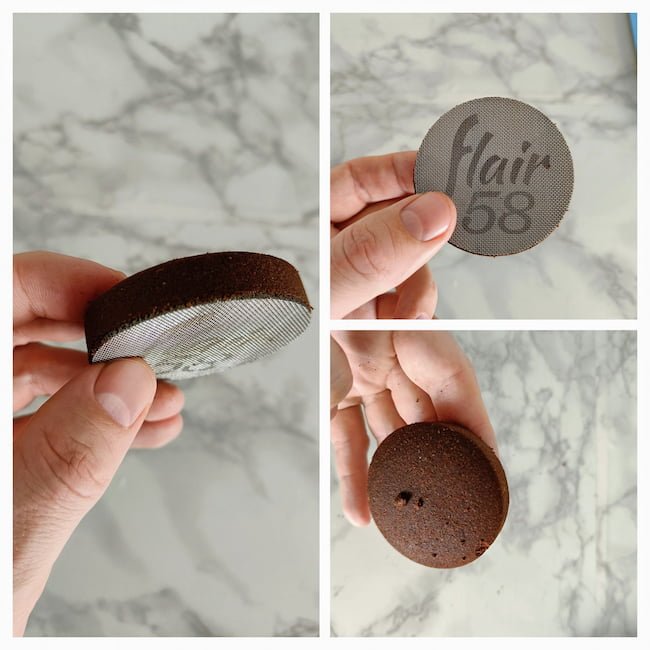
drawbacks
One thing to consider when getting the Flair 58 is your kitchen counter or workspace.
The lever is relatively high when lifted. As a result, it won’t fit under many kitchen counters.
The counter where I tested the brewer only has 57 centimeters of space under the cabinet, which isn’t enough. I think you’d need around 65 centimeters/25 inches to have enough clearance, so you should plan before you buy.
Also, do you have somewhere to hide that hideous power supply and extra cord on your counter?
Alternatives
The Flair 58 is less forgiving compared to many entry-level espresso makers since you have to manage both temperature and pressure quite carefully.
There are many small parameters you need to control to make good espresso; grinding, dosing, prepping, and tamping. Adding pressure and temperature to that equation is a new multiplier for intricacy.
I’m not sure I can recommend this as your first machine. It would probably be a bit more forgiving to start your espresso journey on something like a Breville Bambino if you just want to pull some shots and dip your toes into the espresso world.
Of course, the elephant in the room is that the Flair 58 doesn’t offer any milk-steaming capabilities, and most beginners probably also want to experiment with lattes and cappuccinos. Again, that’s something you get with a Breville machine.
Of course, there’s also the Cafelat Robot to consider when talking about manual espresso. While the Flair 58 beats it in many aspects, I can still understand people who would go for a Robot instead.
- It’s a more straightforward construction
- Doesn’t need to be plugged in
- It also takes up less space on a kitchen counter
Maybe, you don’t get the satisfaction of using an actual 58 mm portafilter (and all the doors it opens for you in terms of accessories), but ultimately, I think the espresso shots are comparable.
You can probably get more control and geek out a bit more with the Flair due to the cornucopia of distribution tools and accessories you get with a 58 mm portafilter. With the Robot, you’re locked into Cafelat’s ecosystem.
VERDICT: Flair 58 review
My opinion is that the Flair 58 is excellent, but I’m not sure it’s the ultimate machine it sets out to be
Yes, it’s probably the best manual espresso maker on the market. However, in some ways, it’s not a manual espresso maker anymore.
In terms of price, size, and complexity, it’s comparable to many single-boilers and even a lever machine-like La Pavoni Europiccola.
The most appealing thing about manual espresso makers is that they are affordable, simplistic, and compact. The 58 is neither of those.
But the Flair 58 is still an excellent product. It’s beautiful, well made, and produces excellent coffee.
If you’re already a competent home barista, and you can live with a few minor quirks, I think you’ll have fun with this device.
➡️ Check the current price at Coffee Bros
➡️ Check the current price at Prima Coffee
➡️ Check the current price at Flair Official Site
